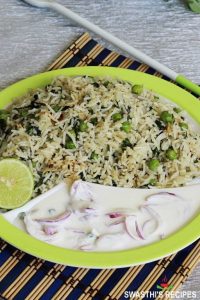Get ready to unlock a world of flavors and benefits with fermentation! This ancient process of allowing microorganisms to break down food has been used for centuries to create delicious, nutritious, and probiotic-rich foods. As a beginner, it can be intimidating to start fermenting your own foods, but don’t worry – we’ve got you covered. In this article, we’ll explore 20 flavorful fermentation recipes that are perfect for beginners. From tangy sauerkraut to spicy kimchi, we’ll take you on a journey through the world of fermented delights.
Whether you’re looking to add some gut-friendly goodness to your meals or just want to try something new and exciting, these recipes are sure to please. So grab a jar, get ready to get messy, and let’s dive into the wonderful world of fermentation!
Homemade Sauerkraut with Caraway Seeds
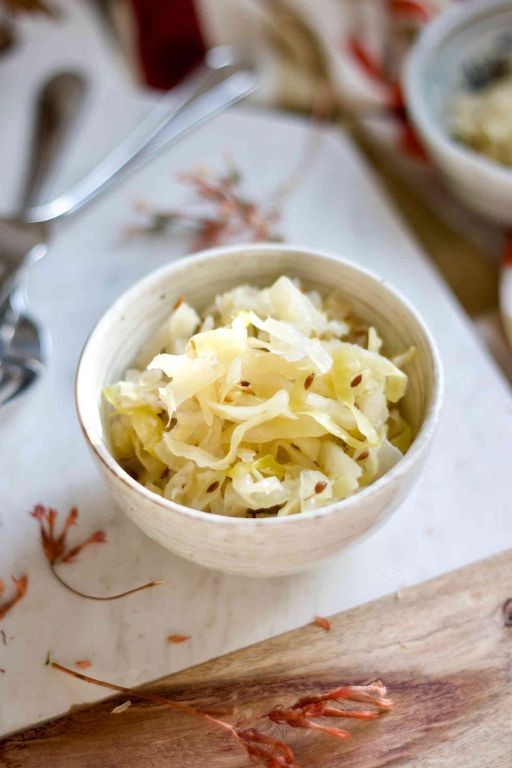
Sauerkraut is a traditional German fermented cabbage dish that’s easy to make and packed with probiotics. This recipe adds a nutty flavor with caraway seeds, perfect for topping sausages or using as an ingredient in recipes.
Ingredients:
– 5 lbs (2.3 kg) of green cabbage, shredded
– 1 tablespoon (15 ml) of salt
– 1/4 cup (60 g) of caraway seeds
– 1/4 cup (60 ml) of water
Instructions:
1. In a large bowl, massage the shredded cabbage with your hands for about 5 minutes to release the juices.
2. Add the salt and mix until the cabbage is evenly coated.
3. Pack the cabbage mixture into a clean glass jar or container, pressing down firmly to eliminate air pockets.
4. Sprinkle the caraway seeds over the top of the sauerkraut.
5. Pour in the water, making sure that the cabbage is covered by about 1 inch (2.5 cm) of liquid.
6. Weigh down the sauerkraut with a plate or stone to keep it submerged.
7. Leave the sauerkraut at room temperature (68°F – 72°F or 20°C – 22°C) for 3-4 weeks, shaking the jar every few days to release carbon dioxide.
Cooking Time: 3-4 weeks (depending on the desired level of sourness)
Classic Dill Pickles
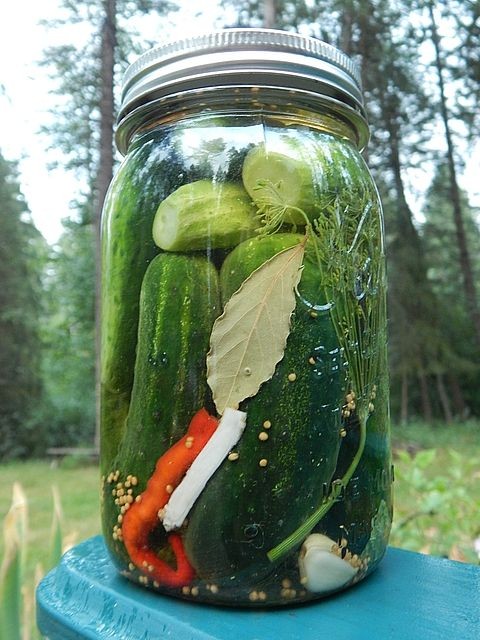
Create a tangy and crunchy snack with this timeless recipe for classic dill pickles. With just a few simple ingredients, you can enjoy the perfect accompaniment to sandwiches, burgers, or as a side dish.
Ingredients:
– 4 cups of thinly sliced cucumbers
– 1 cup (250ml) of white vinegar
– 1/2 cup (125ml) of water
– 1 tablespoon of granulated sugar
– 1 teaspoon of salt
– 1/4 teaspoon of whole black peppercorns
– 1/4 cup of fresh dill weed
Instructions:
1. In a large bowl, combine the sliced cucumbers and salt. Let it sit for 30 minutes to allow the cucumbers to release their excess water.
2. Rinse the cucumber slices with cold running water to remove excess salt.
3. In a large pot, combine the vinegar, water, sugar, black peppercorns, and fresh dill weed. Bring the mixture to a boil over medium-high heat.
4. Pack the cucumber slices into clean, sterilized jars, leaving about 1/2 inch of headspace.
5. Pour the hot pickling liquid over the cucumbers, making sure they are completely covered.
6. Seal the jars and let them cool to room temperature. Store them in the refrigerator.
Cooking Time: 10-15 minutes (plus cooling time)
Spicy Kimchi with Gochugaru
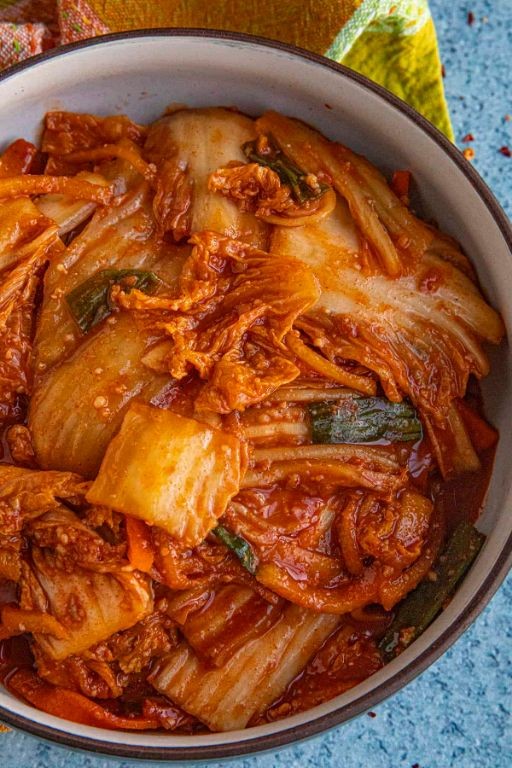
Kimchi, a traditional Korean side dish, is a staple in many Korean households. This spicy version uses gochugaru, also known as Korean chili flakes, to add an intense heat level.
Ingredients:
– 2 lbs napa cabbage, cut into 2-inch pieces
– 2 tablespoons coarse salt
– 1/4 cup gochugaru (Korean chili flakes)
– 2 cloves garlic, minced
– 1 tablespoon grated ginger
– 1/4 cup fish sauce (optional)
– 1/4 cup Korean chili paste (gochujang) (optional)
Instructions:
1. Rinse the cabbage pieces in cold water to remove any impurities.
2. In a large bowl, combine the cabbage and coarse salt. Massage the cabbage with your hands for about 5 minutes to help soften the leaves.
3. Rinse the cabbage pieces again in cold water to remove excess salt.
4. In a blender or food processor, blend the gochugaru, garlic, ginger, fish sauce (if using), and chili paste (if using) into a smooth paste.
5. Combine the blended mixture with the cabbage and mix well.
6. Pack the kimchi mixture into a jar, pressing down firmly to remove any air pockets.
7. Leave the kimchi at room temperature for 1-2 days before refrigerating.
Cooking Time: None (kimchi is typically fermented)
Simple Kombucha with Green Tea
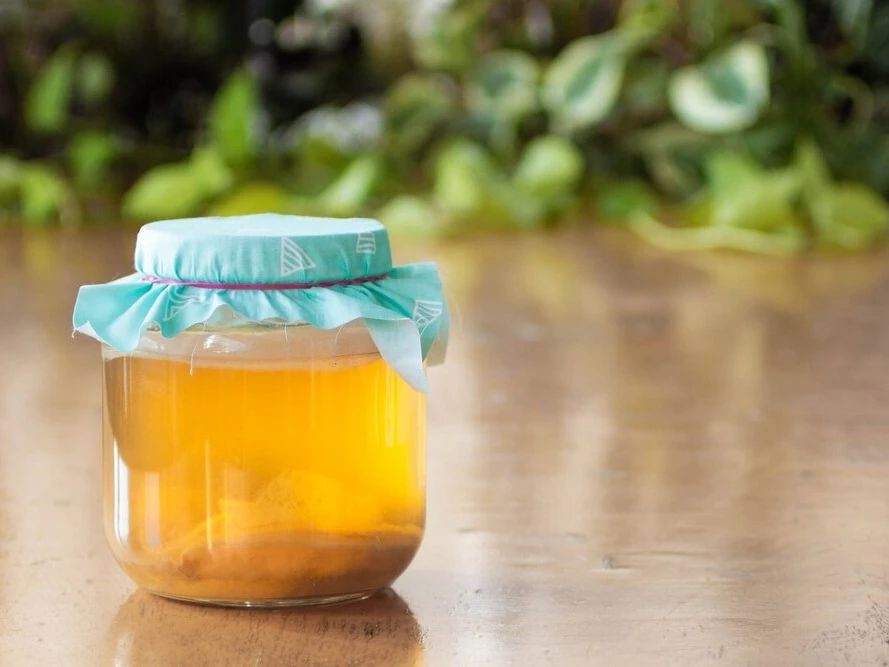
Get ready to brew your own delicious kombucha at home! This recipe uses green tea as the base, giving it a subtle and refreshing flavor.
Ingredients:
– 1 SCOBY (Symbiotic Culture of Bacteria and Yeast) – available online or from a local health food store
– 8 cups water
– 4 green tea bags (or 2 teaspoons loose-leaf green tea)
– 1 cup sugar
– 1 cup starter tea (from previous batch of kombucha or store-bought starter culture)
Instructions:
1. Bring the water to a boil and remove from heat.
2. Add the green tea bags (or loose-leaf tea) and let it steep for 5 minutes.
3. Remove the tea bags and add sugar, stirring until dissolved.
4. Cool the mixture to room temperature.
5. Place the SCOBY in the liquid and cover with a breathable cloth or paper towel.
6. Ferment at room temperature (68°F – 72°F) for 7-14 days.
7. Once fermented, strain the kombucha through a cheesecloth or fine-mesh sieve into a new container.
Cooking Time: None! Let the SCOBY do its magic
Tangy Beet Kvass
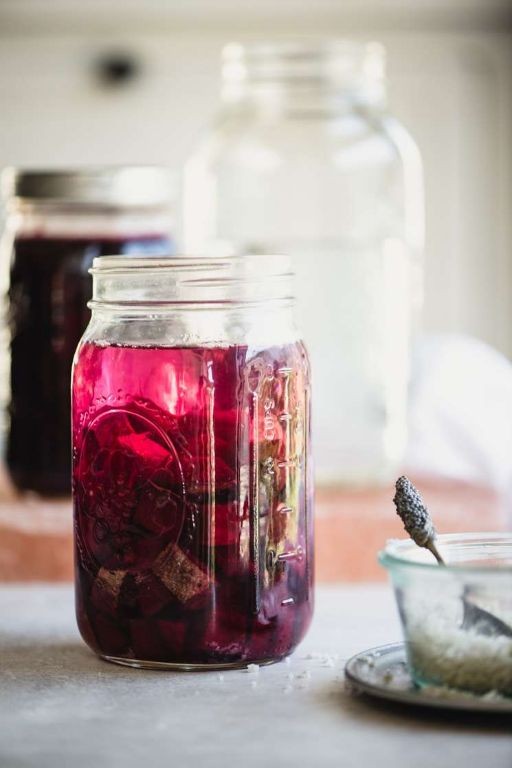
Kvass is a fermented beverage made from fruits, vegetables, and grains. This recipe combines the earthy sweetness of beets with a tangy kick, perfect for sipping on a warm day.
Ingredients:
– 2 lbs cooked beets (canned or fresh)
– 1 gallon water
– 1/4 cup sugar
– 1 packet active dry yeast (optional)
– 1 tablespoon lemon juice
– Fresh herbs like dill, parsley, or chives for garnish (optional)
Instructions:
1. Combine cooked beets and water in a large pot. Bring to a boil, then reduce heat and simmer for 10 minutes.
2. Strain the mixture through a cheesecloth or fine-mesh sieve into a large bowl, pressing on solids to extract as much liquid as possible.
3. Add sugar and yeast (if using) to the beet juice. Stir until dissolved.
4. Transfer the mixture to a sanitized glass container with a wide mouth. Cover loosely with cheesecloth or a coffee filter.
5. Allow the kvass to ferment at room temperature (around 68°F to 72°F) for 2-3 days, or until it reaches your desired level of sourness and carbonation.
6. Strain and chill before serving. Garnish with fresh herbs, if desired.
Cooking Time: 10 minutes preparation time; 2-3 days fermentation time
Fermented Garlic Honey
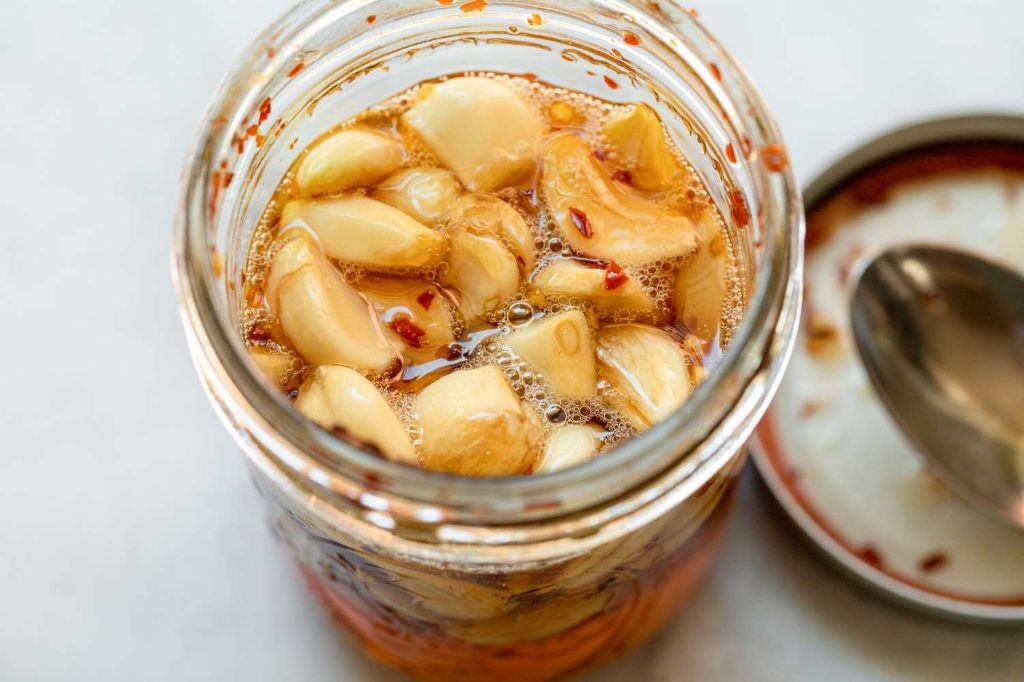
Elevate your cooking with this sweet and savory condiment, perfect for topping meats, cheeses, and vegetables.
Ingredients:
– 1 cup pure honey
– 3-4 cloves of garlic, peeled and minced
– 1/2 cup water
– Cheesecloth or a clean cotton cloth
– A glass jar with a wide mouth
Instructions:
1. In a small bowl, mix together the honey and minced garlic until well combined.
2. Add the water to the mixture and stir until it forms a smooth paste.
3. Line the glass jar with cheesecloth or a clean cotton cloth, leaving some extra material at the top for sealing.
4. Pour the garlic-honey mixture into the prepared jar, making sure to remove any air pockets.
5. Cover the jar with plastic wrap or a tight-fitting lid and let it sit in a cool, dark place for 7-10 days to ferment.
6. After the fermentation period, strain the liquid through cheesecloth or a fine-mesh sieve into another container. Discard the solids.
7. Store the fermented garlic honey in an airtight container at room temperature for up to 2 weeks.
Cooking Time: 7-10 days (fermentation time)
Probiotic Coconut Yogurt
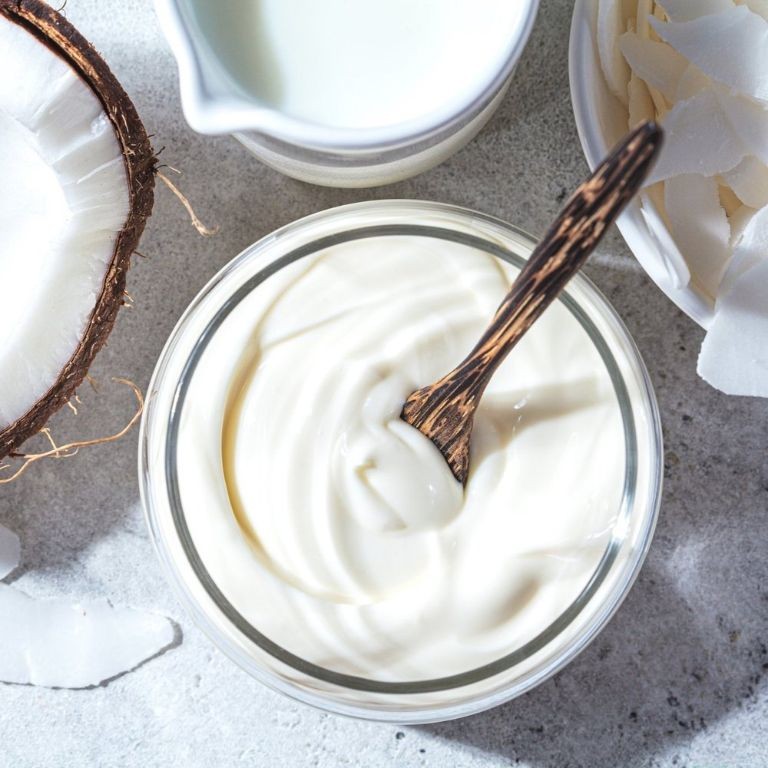
Create a delicious and healthy probiotic yogurt with the creamy richness of coconut milk. This recipe is perfect for those looking for a dairy-free alternative that’s packed with gut-friendly bacteria.
Ingredients:
– 1 can full-fat coconut milk
– 1/4 cup plain kefir or probiotic powder (containing at least 1 billion CFU)
– 1 tablespoon honey or maple syrup (optional)
– Pinch of salt
Instructions:
1. Open the can of coconut milk and scoop out the thick cream that has risen to the top. Reserve for another use.
2. Pour the remaining liquid into a blender or food processor with the kefir or probiotic powder, honey or maple syrup (if using), and salt.
3. Blend on high speed until smooth and creamy, stopping to scrape down the sides of the blender as needed.
4. Pour the mixture into a glass jar or container and refrigerate for at least 4 hours or overnight to allow the flavors to meld and the probiotics to activate.
5. Serve chilled, garnished with your favorite toppings such as fruit, nuts, or granola.
Cooking Time: None
Easy Fermented Hot Sauce
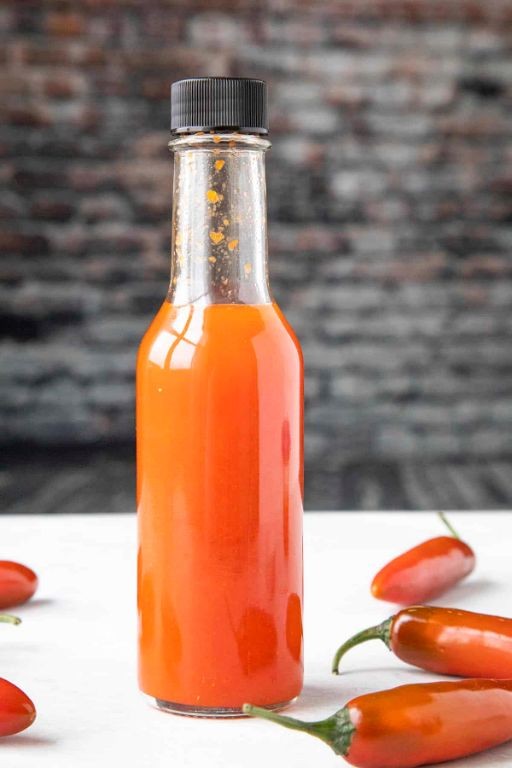
Add a tangy kick to your meals with this simple fermented hot sauce recipe. This condiment requires minimal effort and patience, but yields a rich, flavorful sauce perfect for cooking or as a dipping accompaniment.
Ingredients:
– 1 cup chopped jalapeños (or other hot peppers of your choice)
– 1/2 cup water
– 1 tablespoon sea salt
– 1/4 teaspoon starter culture (such as active dry yeast or Korean chili flakes)
Instructions:
1. In a blender or food processor, combine jalapeños, water, and sea salt. Blend until smooth.
2. Transfer the mixture to a clean glass jar or container with a wide mouth.
3. Add the starter culture and stir gently to distribute evenly.
4. Cover the jar with cheesecloth or a coffee filter, securing it with a rubber band.
5. Place the jar in a warm, dark spot (around 70°F – 75°F) for 7-10 days, shaking the jar daily to promote fermentation.
6. Once fermentation is complete (when the bubbles have stopped and the sauce has thickened), strain the sauce through a fine-mesh sieve or cheesecloth into a clean glass bottle.
Cooking Time: 0 minutes (fermentation time: 7-10 days)
Traditional Miso Soup Starter
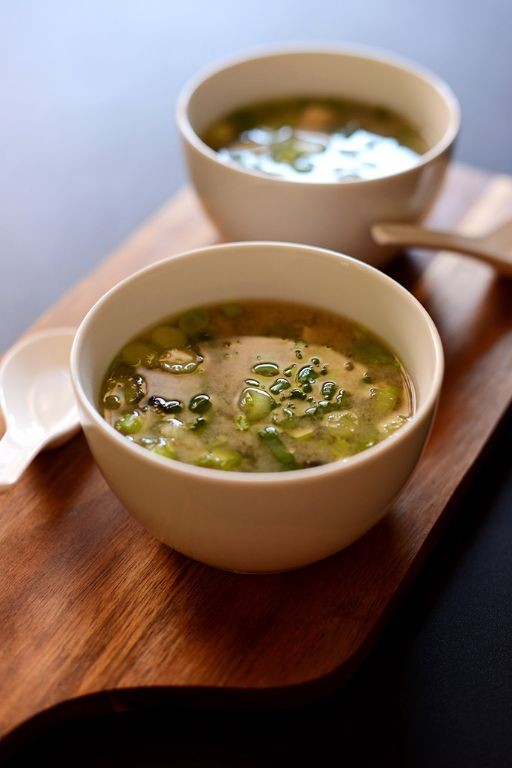
This classic Japanese soup is a comforting start to any meal, with the rich flavors of miso paste and dashi broth.
Ingredients:
– 2 cups dashi broth (homemade or store-bought)
– 1/4 cup white miso paste
– 1 tablespoon soy sauce
– 1 teaspoon sake (optional)
– 1/2 teaspoon mirin (sweet Japanese cooking wine)
– 2 green onions, thinly sliced
– 1/4 cup cubed wakame seaweed (or substitute with other seaweed)
Instructions:
1. In a small saucepan, combine dashi broth, miso paste, soy sauce, sake (if using), and mirin.
2. Whisk until the miso is fully dissolved.
3. Bring the mixture to a simmer over medium heat.
4. Reduce the heat to low and let it cook for 5 minutes.
5. Stir in sliced green onions and cubed wakame seaweed.
6. Serve immediately, or store in an airtight container in the refrigerator for up to 3 days.
Cooking Time: 10-15 minutes
Crunchy Fermented Carrot Sticks
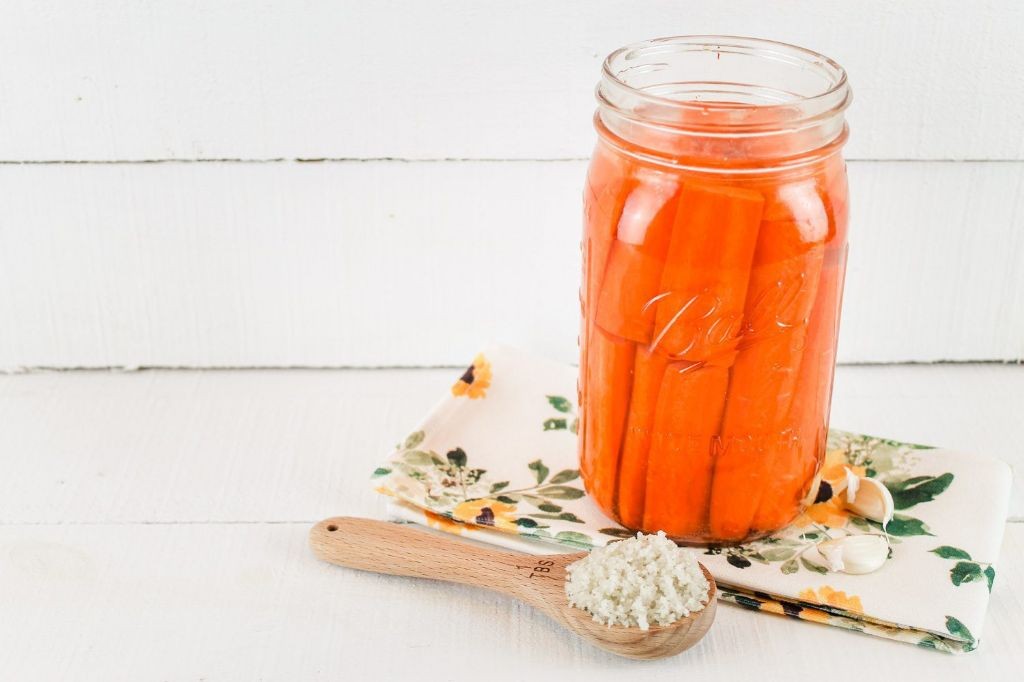
Fermenting carrots may seem unconventional, but the result is a crunchy, tangy snack that’s packed with probiotics and flavor. This recipe takes just 3 simple steps to create a tasty treat that’s perfect for snacking or adding to salads.
Ingredients:
– 2 lbs carrots, peeled and cut into sticks
– 1/4 cup water kefir (or plain yogurt)
– 1 tablespoon honey
– 1/4 teaspoon sea salt
Instructions:
1. In a large bowl, combine the carrot sticks and water kefir. Let it sit at room temperature for 24-48 hours to allow fermentation to begin.
2. After fermentation has started, stir in the honey and sea salt until dissolved.
3. Transfer the fermented carrots to an airtight container and store in the refrigerator. Allow them to chill and develop their signature crunch (about 1 week).
Cooking Time: None required! Just let the fermentation process do its magic.
Ginger Bug for Homemade Sodas

Make your own fizzy drinks with this simple recipe! This ginger bug is a natural yeast starter that will ferment your favorite fruits and veggies to create a unique and refreshing soda.
Ingredients:
– 1 cup water
– 2 tablespoons sugar
– 1 tablespoon active dry yeast (not rapid rise or instant)
– 1-inch piece of fresh ginger, peeled and sliced thinly
Instructions:
1. In a clean glass jar, combine the water and sugar. Stir until the sugar dissolves.
2. Add the yeast and sliced ginger to the mixture. Cover the jar with cheesecloth or a paper towel, securing it with a rubber band.
3. Let the mixture sit at room temperature (around 70°F to 75°F) for 24-48 hours, shaking the jar every 12 hours. The mixture will start to bubble and emit a sour smell – this is normal!
4. After 2-3 days, your ginger bug is ready to use in soda recipes.
Cooking Time: None (fermentation process takes place over several days)
Fermented Salsa Verde

This fermented salsa verde is a tangy and flavorful condiment that’s perfect for topping tacos, grilled meats, or vegetables. By fermenting the ingredients, you’ll add depth and umami flavor to this classic salsa.
Ingredients:
– 2 cups chopped fresh cilantro
– 1 cup chopped fresh parsley
– 1/2 cup chopped fresh epazote (optional)
– 1/4 cup salt
– 1/4 cup water
– 1/4 cup white vinegar
– 1 jalapeño pepper, seeded and chopped
Instructions:
1. In a blender or food processor, combine cilantro, parsley, epazote (if using), salt, and water. Blend until you reach your desired consistency.
2. Transfer the mixture to a clean glass jar with a wide mouth. Add the chopped jalapeño pepper and vinegar. Stir well to combine.
3. Cover the jar and let it ferment at room temperature for 7-10 days. Shake the jar daily to help distribute the fermentation process.
4. After fermentation, refrigerate the salsa to slow down the fermentation process. It will keep for several weeks in the fridge.
Cooking Time: 7-10 days (fermentation time)
Bubbly Water Kefir
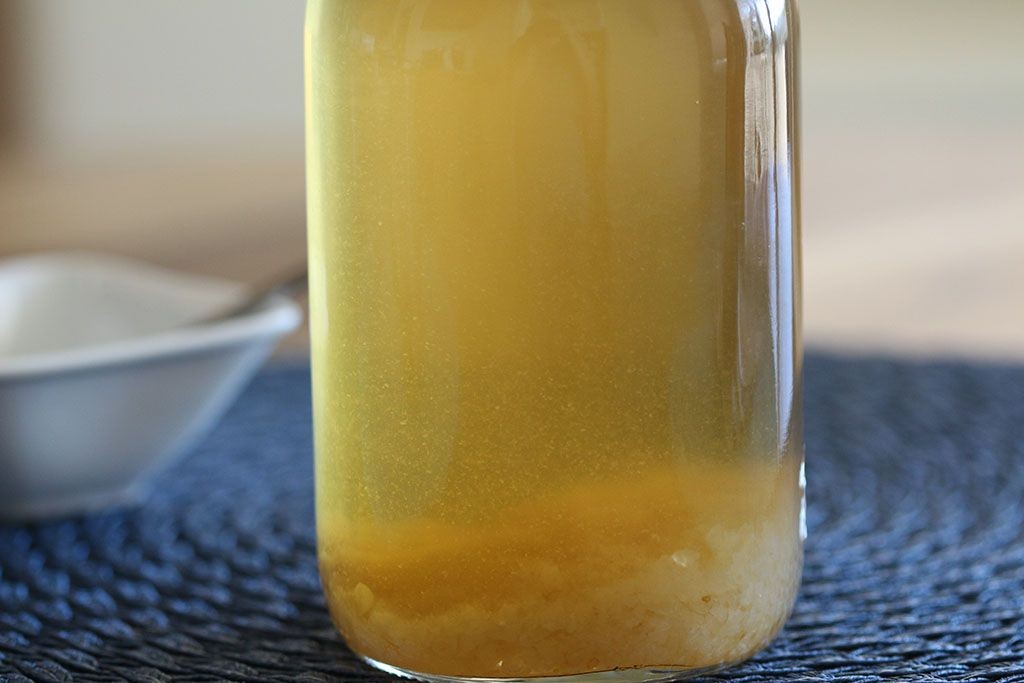
Kefir is a fermented milk drink that has been popularized by its tangy flavor and numerous health benefits. This recipe takes the classic kefir to the next level with the addition of carbonation, creating a fizzy and refreshing beverage.
Ingredients:
– 1 cup water
– 1/4 cup kefir grains (available at most health food stores or online)
– 1 tablespoon honey (optional)
Instructions:
1. In a clean glass jar, combine the water and kefir grains.
2. Stir gently to distribute the grains evenly.
3. Cover the jar with a breathable cloth or plastic wrap and let it sit in a warm place for 12-24 hours, allowing the fermentation process to occur.
4. Strain the liquid through a cheesecloth or fine-mesh sieve into another container. Discard the solids.
5. If desired, add honey to taste and stir well.
6. Transfer the kefir to a glass bottle with a tight-fitting lid. Add 1-2 tablespoons of sugar or honey (optional) and shake vigorously for 30 seconds to carbonate the drink.
7. Store in the refrigerator to slow down fermentation.
Cooking Time: None
Sweet and Sour Fermented Radishes
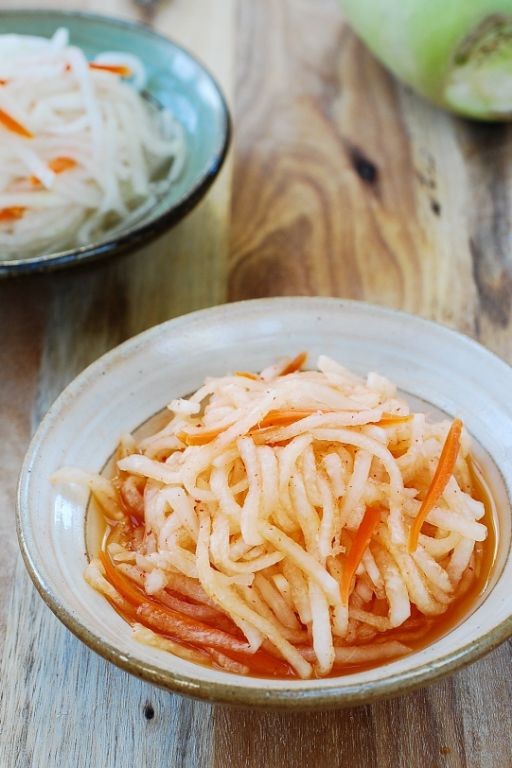
Transform ordinary radishes into a tangy and addictive snack with this simple fermentation recipe.
Ingredients:
– 1 pound of radishes, thinly sliced
– 1/2 cup water
– 1 tablespoon honey
– 1 tablespoon apple cider vinegar
– 1/4 teaspoon salt
Instructions:
1. In a large bowl, combine the sliced radishes and salt. Massage the radishes with your hands for about 5 minutes to release their natural juices.
2. Add the water, honey, and apple cider vinegar to the bowl. Mix well until all the ingredients are fully incorporated.
3. Pack the mixture into a clean glass jar, leaving about an inch of headspace at the top.
4. Cover the jar with a lid or cheesecloth, and let it sit at room temperature (around 68°F) for 3-5 days. The radishes will start to ferment, developing a tangy flavor and crunchy texture.
5. Once the fermentation process is complete, refrigerate the jar to slow down the fermentation.
Cooking Time: None! Simply wait for the fermentation process to finish before refrigerating.
Lacto-Fermented Green Beans

This lacto-fermentation recipe transforms green beans into a tangy and crunchy snack or side dish, rich in probiotics and flavor. With minimal effort and time, you’ll be enjoying your own fermented delights in no time!
Ingredients:
– 1 pound fresh green beans, trimmed
– 2 tablespoons sea salt
– 1 tablespoon whey (or 1 cup plain yogurt with 1 tablespoon lemon juice)
– 1/4 cup water
Instructions:
1. In a large glass jar or container, create a brine by mixing the sea salt and water until dissolved.
2. Pack the green beans into the jar, leaving about 1 inch of space at the top.
3. Pour the whey (or yogurt mixture) over the green beans, making sure they’re fully submerged.
4. Cover the jar with a lid or cheesecloth, securing it with a rubber band.
5. Allow the fermentation to take place in a cool, dark spot for 3-5 days, shaking the jar daily.
6. Once the fermentation process is complete (beans will be slightly softened and tangy), store the fermented green beans in the refrigerator to slow down fermentation.
Cooking Time: None! Enjoy your lacto-fermented green beans straight from the fridge as a snack or side dish.
Fermented Turmeric Paste
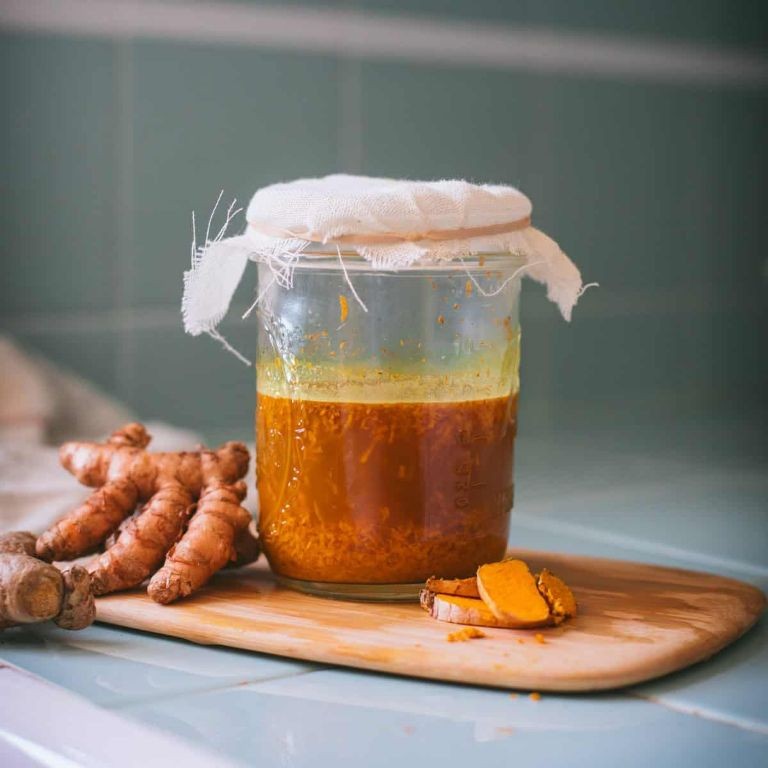
Fermenting turmeric creates a potent, vibrant paste that’s perfect for adding to curries, soups, or using as a natural remedy. This recipe combines the anti-inflammatory properties of turmeric with the probiotic benefits of fermentation.
Ingredients:
– 1 cup turmeric powder
– 1/2 cup water
– 1 tablespoon active cultured yogurt (containing Lactobacillus acidophilus and Bifidobacterium bifidum)
– 1 teaspoon salt
Instructions:
1. In a small bowl, mix together the turmeric powder and water to form a thick paste.
2. Add the cultured yogurt and stir until well combined.
3. Transfer the mixture to a clean glass jar with a tight-fitting lid.
4. Leave the jar at room temperature (68°F-72°F) for 7-10 days, shaking the jar daily to help fermentation progress.
5. After 7-10 days, transfer the paste to an airtight container and store in the refrigerator.
Cooking Time: None
Tips:
– Start with a smaller batch if this is your first time fermenting turmeric.
– If you don’t have cultured yogurt, use a probiotic-rich alternative like kefir or kombucha.
– This fermented turmeric paste can be used within 3-6 months after fermentation.
Homemade Fermented Mustard

Add a tangy twist to your condiments with this easy-to-make fermented mustard recipe.
Ingredients:
– 1/2 cup brown or white mustard seeds
– 1/4 cup water
– 1 tablespoon salt
– 1 tablespoon whey (or active culture yogurt)
– Optional: spices and flavorings of your choice (e.g., garlic, coriander, cayenne)
Instructions:
1. In a small bowl, soak the mustard seeds in water for at least 2 hours or overnight.
2. Drain and rinse the mustard seeds, then transfer them to a clean glass jar with a wide mouth.
3. Add salt, whey (or yogurt), and any desired spices/flavorings to the mustard seeds.
4. Stir until the mixture is well combined, then cover the jar loosely with cheesecloth or a coffee filter.
5. Ferment at room temperature (around 70°F/21°C) for 7-10 days, shaking the jar daily.
6. After fermentation, store the mustard in the refrigerator to slow down the fermentation process.
Cooking Time: None, as this is a fermented recipe
Fermented Fruit Chutney
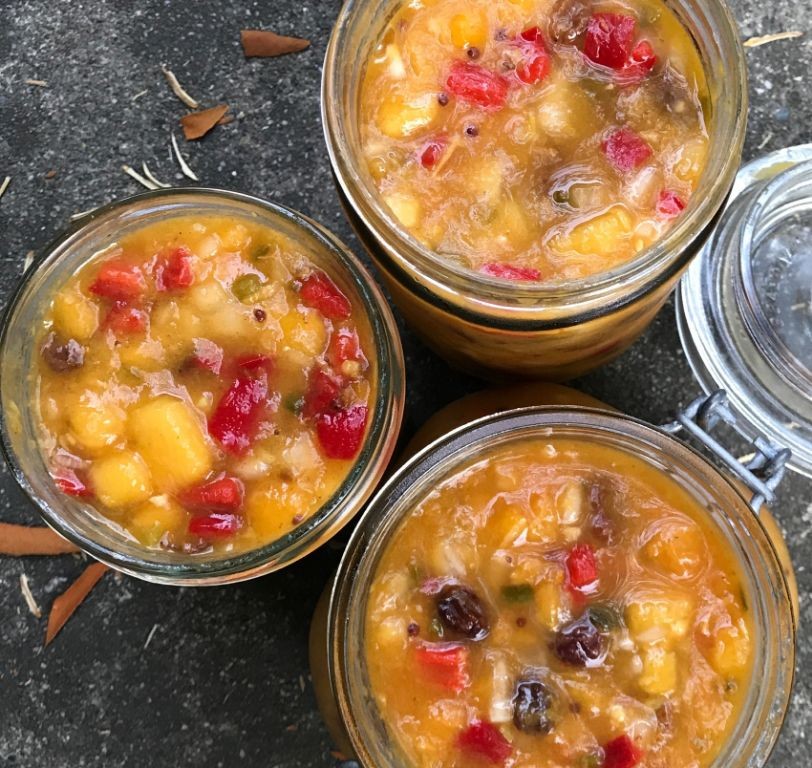
Transform ordinary fruits into a tangy, sweet, and sour condiment that’s perfect for topping yogurt, oatmeal, or using as a dip. This recipe uses the natural fermentation process to create a probiotic-rich spread.
Ingredients:
– 2 cups mixed fruit (such as berries, apples, pears)
– 1 cup water
– 1/4 cup honey
– 1 tablespoon lemon juice
– 1/4 teaspoon salt
– Optional: spices or herbs of your choice (e.g., cinnamon, ginger)
Instructions:
1. Combine the fruit, water, honey, lemon juice, and salt in a large bowl. Mix well.
2. Transfer the mixture to a clean glass jar with a wide mouth.
3. Cover the jar with cheesecloth or a coffee filter, securing it with a rubber band.
4. Let the mixture ferment at room temperature (around 70°F) for 5-7 days, shaking the jar daily.
5. After fermentation, taste and adjust sweetness or tanginess as desired. Store in the refrigerator to slow down fermentation.
Cooking Time: 0 minutes (fermentation time varies depending on environmental conditions)
Smoky Fermented Tomato Sauce
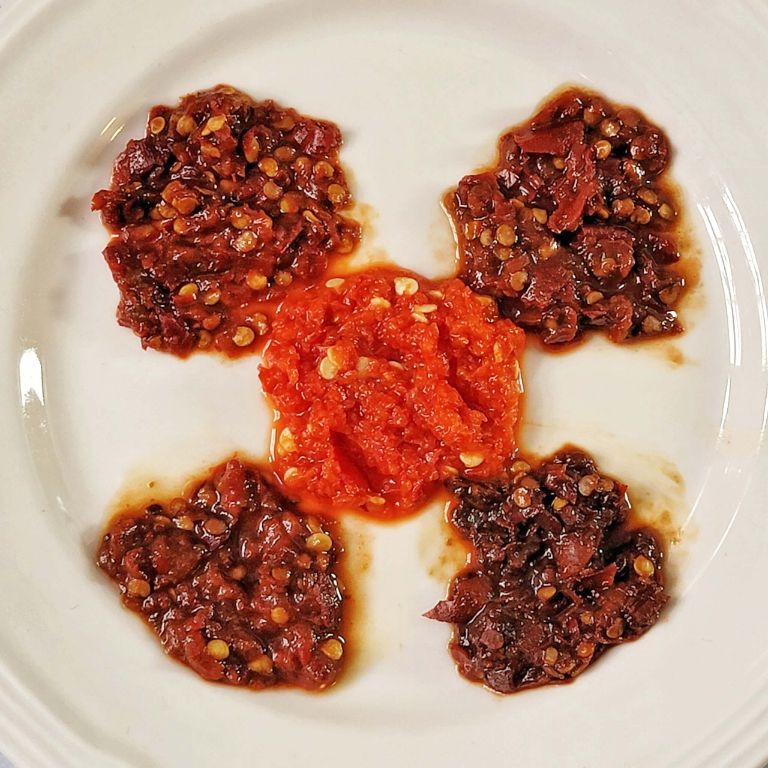
This recipe combines the rich flavors of tomatoes with the tanginess of fermentation and a hint of smokiness, perfect for elevating pasta dishes or using as a dipping sauce.
Ingredients:
– 2 lbs ripe tomatoes, cored and chopped
– 1/4 cup water
– 2 tbsp sea salt
– 1 tsp smoked paprika
– 1/4 tsp black pepper
– 1/4 tsp caraway seeds (optional)
– 1/2 cup active fermentation starter (or 1/4 cup store-bought sauerkraut juice)
Instructions:
1. In a large bowl, combine chopped tomatoes, water, sea salt, smoked paprika, black pepper, and caraway seeds (if using). Mix well.
2. Transfer the mixture to a glass jar or crock, leaving about 1 inch of space at the top.
3. Add the fermentation starter (or sauerkraut juice) and stir gently to combine.
4. Cover the jar or crock with cheesecloth or a coffee filter, securing it with twine or rubber band.
5. Allow the mixture to ferment at room temperature (68-72°F) for 3-5 days, shaking daily to redistribute the ingredients.
6. Once fermentation is complete, refrigerate the sauce and use within a few weeks.
Cooking Time: None
Fermented Onion Relish

This fermented onion relish is a flavorful and nutritious addition to any meal. By allowing the onions to ferment, you’ll develop a tangy, slightly sweet condiment that’s packed with probiotics.
Ingredients:
– 1 large onion, thinly sliced
– 1/2 cup water
– 1 tablespoon sea salt
– 1 tablespoon sugar
– 1/4 cup active culture yogurt or kefir (optional)
Instructions:
1. In a glass jar, combine the sliced onions and water.
2. Sprinkle the sea salt over the onions, stirring to dissolve.
3. Cover the jar with a cloth or paper towel to keep out contaminants.
4. Let the mixture ferment at room temperature (68°F-72°F) for 5-7 days, shaking the jar daily.
5. After fermentation is complete, stir in the sugar and active culture yogurt or kefir (if using).
6. Transfer the relish to a clean glass jar with a tight-fitting lid and refrigerate.
Cooking Time: 0 minutes
Summary
Get ready to dive into the world of fermentation with these 20 delicious and easy recipes perfect for beginners! From classic sauerkraut to spicy kimchi, tangy beet kvass, and even fermented yogurt and soda, this collection has something for every taste bud. Whether you’re looking to add some crunch to your salads or kick up your snacks, these recipes are sure to inspire you to get fermenting. With simple instructions and minimal equipment required, anyone can start making their own fermented treats at home.
